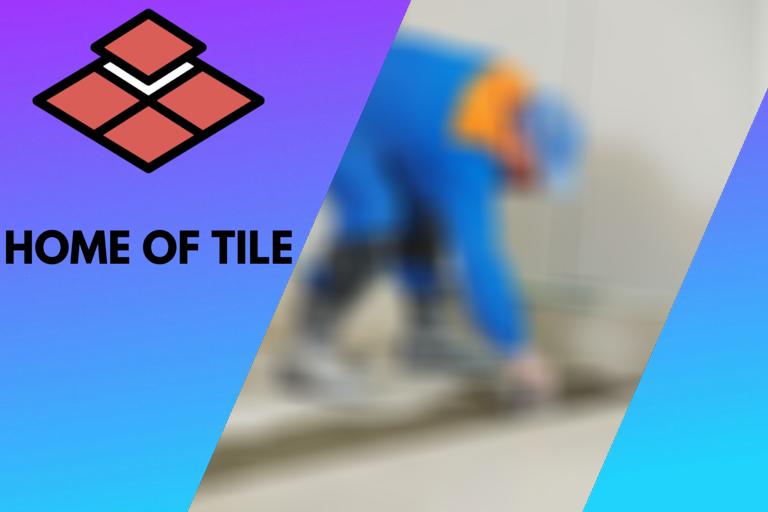The Essential Tools for Successful Ditra Installation
Are you planning a tile installation project and looking for a reliable solution that ensures long-lasting, crack-free results? Look no further! Our latest blog post, ‘Ditra Installation,’ delves into the world of this top-quality uncoupling membrane system that has revolutionized the tile industry.
Ditra installation:
Ditra installation is essential in tile projects, providing a waterproof and uncoupling layer for floor substrates prone to movement or moisture. The process involves gathering necessary tools and materials, inspecting and preparing the substrate, applying thin-set mortar, cutting and seaming the membrane, allowing it to dry, and installing tiles.
Following safety precautions and recommendations ensures a successful installation, protecting tiles from potential issues and providing a stable foundation.

Dive into this comprehensive guide on ditra installation to ensure a successful tile project. Learn about the benefits, required materials, step-by-step instructions, and expert tips and tricks to achieve a seamless, long-lasting result. Confidence awaits. Happy tiling!
Contents
- 1 Ditra Installation Process
- 2 What is the Proper Method for Attaching DITRA Membrane to a Subfloor?
- 3 What Should Be Placed Beneath DITRA?
- 4 What is the required drying time for DITRA before proceeding with tiling?
- 5 What is the required thickness of the subfloor for proper DITRA installation?
Ditra Installation Process
Installing a Ditra underlayment is an essential step in many tile installation projects. This high-quality product helps to protect your floors and create a more stable foundation for your tiles. In this comprehensive guide, I will walk you through the entire process of a Ditra installation, providing tips and recommendations from our personal experience.
I will also cover the tools and materials needed for the job and safety precautions to remember.
• What is a Ditra Underlayment?
Ditra is a polyethylene membrane designed for underlayment in tile installations. This product provides a waterproof barrier and uncoupling layer, allowing for the installation of tiles over substrates that may be prone to movement or moisture.
It is lightweight, easy to work with, and highly effective at preventing tile and grout cracking.
• Necessary Tools and Materials for Ditra Installation
Before beginning the Ditra installation process, gather the following tools and materials:
- Ditra underlayment roll
- Thin-set mortar (preferably a modified thin-set)
- Trowel with a 1/4-inch by 3/16-inch V-notch
- Utility knife or scissors
- Chalk line and/or tape measure
- Bucket and mixing paddle for mortar
- Margin trowel for spreading mortar
- Sponge and water
- Rubber float or Ditra roller
- Tile spacers (if necessary for tile installation)
- Knee pads (recommended for extended installation time)
• Preparation Before Installing Ditra Underlayment
– Inspect the Substrate
Before installing, carefully inspect your floor substrate for any signs of damage, unevenness, or defects. Address any necessary issues to ensure your floor is level and clean.
– Measure and Cut the Ditra
Using a tape measure and chalk line, determine the size and shape of the area that requires Ditra underlayment. After taking the necessary measurements, unroll the Ditra and use a utility knife or scissors to cut the material to the required size.
• Step-by-Step Ditra Installation Process
– Apply Thin-Set Mortar
Following the manufacturer’s instructions, mix the modified thin-set mortar in a bucket until it reaches a creamy consistency. Use a 1/4-inch by 3/16-inch V-notched trowel to apply the mortar evenly to the substrate where you will be laying the Ditra.
– Install the Ditra Membrane
Lay the Ditra underlayment on the freshly applied thin-set mortar with the fleece side facing downward. Press the membrane firmly into the mortar, ensuring proper adhesion and removing air bubbles.
– Use a Rubber Float or Ditra Roller
After laying the Ditra, use a rubber float or Ditra roller to press the membrane against the substrate. Apply even pressure to ensure the Ditra is fully embedded in the thin-set mortar. This will give you a smooth, even surface to install the tiles.
– Cutting and Seaming the Ditra
When required to cut and seam the Ditra membrane, overlap the adjoining pieces by at least two inches. Apply thin-set mortar to the substrate beneath the overlapping area, and use the rubber float or Ditra roller to press the layers together.
– Allow the Mortar to Dry
Before installing your tiles, let the thin-set mortar beneath the Ditra dry completely. This typically takes around 24 hours, but it may vary depending on the manufacturer’s recommendations and your project’s specific conditions.
– Install the Tiles
With the Ditra underlayment properly installed, you can now install your tiles using the appropriate tile setting mortar and spacers, following standard tile installation procedures.
• Safety Precautions and Recommendations
While working on a Ditra installation, follow these safety precautions and recommendations:
- Use protective gear such as gloves, safety goggles, and knee pads to minimize the risk of injury.
- Always mix modified thin-set mortar according to the manufacturer’s instructions to achieve consistency and bond strength.
- Keep a clean work area and tools, using a damp sponge to remove any adhesive residue from the surface of the Ditra or your tools.
- Maintain proper ventilation and avoid working in an enclosed space with limited airflow to ensure the safe drying of any materials.
- Monitor the installation process, checking for any potential mistakes or issues, and address these as soon as possible.
• Conclusion
Ditra installation is crucial in many tile projects, delivering dependable waterproofing and uncoupling layers for needed floors. Following the recommendations and instructions outlined in this comprehensive guide, you can help protect your tiles from potential issues arising from moisture or movement.
With proper preparation, installation, and attention to detail, you can enjoy the benefits of a flawless Ditra installation for years to come.
What is the Proper Method for Attaching DITRA Membrane to a Subfloor?
Installing DITRA on your subfloor ensures a long-lasting and functional floor in residential and commercial settings. DITRA, developed by Schluter Systems, is a polyethylene membrane that serves as a waterproofing layer, vapor management solution, and uncoupling layer between the subfloor and tiles.
I will guide you step-by-step on how to attach DITRA to a subfloor to prevent potential issues, such as cracking or delamination of tiles.
• Preparing the Subfloor
Before attaching DITRA to the subfloor, it is crucial to ensure the surface is clean and level. The subfloor must be structurally sound and able to support the weight of the tiles, adhesive, and any additional layers, such as mortar or thinset. Follow these steps to properly prepare the subfloor:
- Clean the subfloor: Remove any dust, debris, or foreign materials from the surface. Use a vacuum cleaner or a soft brush to ensure the subfloor is clean.
- Check the subfloor for levelness: Use a long, straight edge or level to identify any high or low spots on the subfloor. Mark these areas with a pencil or chalk.
- Level the subfloor: Use a self-leveling or floor-leveling compound for uneven areas. Follow the manufacturer’s instructions for mixing and application. Allow the compound to cure for the recommended time.
- Inspect subfloor for damage: Repair any damaged areas, such as cracks, holes, or loose boards. Replace damaged sections if necessary.
• Choosing the Appropriate Adhesive
Selecting the right adhesive for attaching DITRA to the subfloor is essential to ensure a strong bond and proper performance of the entire floor assembly.
The type of adhesive you choose will depend on the subfloor material and other factors such as temperature, humidity, and anticipated load.
– Concrete Subfloors
For concrete subfloors, a dry-set or modified thin-set mortar is recommended. The product should be specifically designed for use with DITRA and meet the requirements of ANSI A118.1, ANSI A118.11, or ANSI A118.15 standards.
– Wooden Subfloors
A modified thin-set mortar that meets the requirements of ANSI A118.11 or ANSI A118.15 is recommended for wooden subfloors. This type of adhesive provides additional flexibility to accommodate the movement of the wood.
• Properly Mix the Adhesive
It is crucial to mix the adhesive according to the manufacturer’s instructions. Too much water, for instance, can weaken the bond and compromise the floor’s performance. Follow these guidelines for mixing:
- Measure the correct water-to-mortar ratio: Adhere to the manufacturer’s recommended ratio, usually found on the packaging.
- Mix the adhesive: Use a mixing paddle attached to a drill at a low speed to ensure a consistent mix. Mix for the recommended time, usually a few minutes.
- Let the adhesive slake: Allow the adhesive to sit, or slake, for the recommended time, usually around 5 to 10 minutes. This step helps the adhesive to fully activate for better bonding and ease of application.
- Briefly mix again: Before application, mix the adhesive for another minute or so to ensure a smooth consistency.
• Attaching DITRA to the Subfloor
Now that the subfloor is prepared and the adhesive is mixed, it’s time to attach DITRA. Follow these steps:
- Lay out the DITRA membrane: Position the DITRA on the subfloor with the grid side facing up and the waffle pattern facing down. Cut the membrane to size, if necessary, with a utility knife.
- Apply the adhesive: Use a notched trowel sized appropriately for the adhesive (usually 1/4 inch) to spread the adhesive evenly on the subfloor. Hold the trowel at a 45-degree angle and apply pressure to ensure the adhesive fully contacts the subfloor.
- Embed the DITRA membrane: Lay the DITRA membrane into the adhesive, grid side up. Use a float or roller to firmly press the membrane into the adhesive, ensuring full contact and eliminating air pockets.
- Overlap DITRA seams: For areas larger than one DITRA sheet, overlap the edges of adjacent sheets by at least 2 inches. This helps maintain continuity and waterproofing across the entire floor.
- Allow the adhesive to cure: Follow the manufacturer’s instructions for curing time before installing tiles over the DITRA.
• Final Thoughts
Properly attaching DITRA to your subfloor is crucial for a long-lasting, functional floor assembly. With proper preparation, appropriate adhesive selection, and careful installation, you can create a strong, waterproof, uncoupling layer that will protect your tiles and subfloor for years.
Step | Description |
|---|---|
1 | Ensure the subfloor is clean, level, and free of any debris. |
2 | Allow the thinset to cure per the manufacturer’s recommendations before installing the tile or floor covering. |
3 | Mix thinset mortar according to the manufacturer’s instructions and apply it to the subfloor using a notched trowel. |
4 | Place the DITRA membrane onto the thinset with the fleece side down and press it firmly into the mortar using a float or roller. |
5 | Allow the thinset to cure per the manufacturer’s recommendations before installing the tile or floor covering. |
6 | Allow the thinset to cure according to the manufacturer’s recommendations before installing the tile or floor covering. |
What Should Be Placed Beneath DITRA?
DITRA is a versatile, lightweight, easy-to-install uncoupling membrane for use in tile and natural stone installations. It serves many purposes, such as waterproofing, vapor management, load distribution, and, most importantly, uncoupling.
Before installing DITRA, knowing what should be placed underneath is crucial to ensure a successful and long-lasting tile installation.
• Preparation of the substrate
Before laying down DITRA, it’s essential to prepare the substrate correctly. Subfloor preparation ensures proper membrane adhesion and tile installation longevity. Here are some guidelines for various substrates:
– Plywood or OSB subfloors
- The subfloor should be clean, even, and free of oil or grease.
- The panels should be properly fastened and installed according to the manufacturer’s guidelines.
- Ensure that the plywood or OSB is appropriately rated for its intended use.
- All seams and gaps should be filled with a suitable patching compound or thin-set mortar.
- For floors exposed to moisture, waterproofing should be applied before installing DITRA.
– Concrete subfloors
- The concrete should be fully cured (usually at least 28 days old) and free of dust, dirt, and debris.
- Any cracks, joints, or other irregularities should be treated with a suitable repair material or crack isolation membrane.
- The surface should be even and free of humps or low spots.
- A moisture barrier should be applied in areas where moisture is a concern before laying DITRA.
– Gypsum-based subfloors
- The subfloor should be fully cured, clean, dry, and free of dust, dirt, and debris.
- Gypsum-based subfloors should be primed with an appropriate primer per the manufacturer’s guidelines.
- Any irregularities, gaps, or seams should be addressed with a suitable patching compound.
- In wet areas, a waterproofing membrane should be applied before installing DITRA.
• Appropriate adhesives for DITRA installations
Once the substrate is prepared, the next step is to select the appropriate adhesive to bond DITRA to the subfloor. The choice of adhesive depends on the type of substrate and specific installation requirements.
– Modified thin-set mortar
A modified thin-set mortar is recommended for adhering the DITRA to plywood, OSB, and concrete substrates. Modified thin-set mortars offer several advantages, such as improved adhesion and flexibility, which can help accommodate the movement and differential expansion and contraction in these substrates.
– Unmodified thin-set mortar
For gypsum-based subfloors, an unmodified thin-set mortar is recommended. Gypsum-based substrates can be sensitive to moisture, and using a modified thin-set mortar with these materials can introduce unwanted moisture to the system.
It’s always advisable to refer to the DITRA manufacturer’s guidelines to ensure the use of the proper adhesive for a specific substrate.
• Incorporating additional features in DITRA installations
In some installations, it might be necessary to incorporate additional features into the DITRA system. These include thermal breaks, sound control, and floor warming.
– Thermal breaks
In cold climates, incorporating a thermal break into the tile installation is often necessary, especially on concrete slabs. For this purpose, a thin layer of insulation (such as foam board or insulation panels) can be placed beneath the DITRA membrane.
This helps prevent heat loss through the slab, which can help increase energy efficiency and comfort.
– Sound control
Specialized acoustic membranes or underlayments can be used beneath the DITRA membrane for installations where sound control is a concern. This helps absorb sound and reduces impact noise transmission through the floor assembly.
– Floor warming
In-floor heating systems can also be installed beneath DITRA, providing additional comfort and warmth during the colder months. Radiant heating systems should be embedded in a self-leveling compound or screed before installing the DITRA membrane.
• Conclusion: Importance of proper underlayment
Properly preparing and selecting the appropriate materials for the substrate under DITRA is essential for a successful and long-lasting tile installation.
Following these guidelines and recommendations will ensure that your DITRA installation offers excellent durability, performance, and overall satisfaction.
| What do you put under DITRA? | |
|---|---|
| 1. | Concrete subfloor |
| 2. | Plywood subfloor |
| 3. | OSB subfloor |
| 4. | Existing ceramic or stone tile |
| 5. | Existing vinyl flooring |
| 6. | Radiant heating systems (embedded within subfloor) |
What is the required drying time for DITRA before proceeding with tiling?
Preparing a floor or a wall for tile installation can be a comprehensive process that requires proper planning and execution to ensure the best results. DITRA, a decoupling membrane manufactured by Schluter Systems, has recently gained popularity among professionals and DIY enthusiasts for its multiple benefits.
I will discuss the importance of allowing DITRA to dry before tiling, the factors affecting the drying time, and recommendations to facilitate the process.
• What is DITRA?
DITRA is a polyethylene membrane that provides uncoupling, waterproofing, vapor management, and load distribution for tile installations. It effectively prevents cracking, moisture damage, and water infiltration, ensuring a long-lasting and durable finish.
• The Significance of Drying Time
Before we delve into the actual drying times, understanding the importance of allowing DITRA to dry before tiling is crucial. When you install DITRA over a substrate, you typically use thin-set mortar to bond the membrane to the floor or wall.
This bonding is critical for successfully applying DITRA, as it ensures a strong attachment to the substrate and prevents membrane movement under the tiles.
If you proceed with tiling before the thin-set mortar has dried, you may face several complications. These issues may include the following:
- The incomplete bond between the DITRA membrane and the substrate leads to potential movement and cracking.
- Moisture trapped under the membrane can cause the thin set beneath the tiles to cure improperly, affecting the overall stability of the tile installation.
- Rapid drying of the thin-set under the tiles leads to reduced bond strength and the possibility of tile failure.
Thus, allowing the thin-set mortar to dry completely before tiling is essential for ensuring your tile installation’s effectiveness, durability, and safety.
• Factors Affecting Drying Time
The drying time of DITRA is primarily affected by two factors: the thin-set mortar used and the environmental conditions.
– Thin-Set Mortar
Different types of thin-set mortar are available in the market, each with its drying time. Following the manufacturer’s guidelines for drying times is crucial based on the specific product used.
Generally, modified thin-set mortars take longer to dry (up to 24 hours) due to the presence of polymers, whereas unmodified thin-set mortars have shorter drying times (around 16 hours).
– Environmental Conditions
The climate and surrounding conditions, such as temperature and humidity, play a significant role in the drying times of the thin-set mortar. Higher temperatures and lower humidity levels cause faster evaporation of moisture and reduced drying times.
On the other hand, colder environments and higher humidity levels can prolong the drying process.
• Recommendations for Optimal Drying
Based on experience, here are some helpful tips to ensure proper drying of the DITRA membrane before tiling:
- Follow Manufacturer’s Instructions: Always adhere to the guidelines provided by the thin-set mortar manufacturer regarding the recommended drying time.
- Control Temperature and Humidity: Try maintaining a room temperature of around 60-70 degrees Fahrenheit (15-21 degrees Celsius) with a relative humidity between 40% and 60%.
- Allow Proper Ventilation: Having adequate airflow and ventilation in the room can aid in evaporation, speeding up the drying process.
- Be Patient: Resist the urge to rush the process. Giving the DITRA membrane ample drying time will ensure a stable and long-lasting tile installation.
- Use a Moisture Meter: If you are unsure whether the thin-set mortar is completely dry, using a moisture meter to measure the moisture levels under the membrane can provide added reassurance.
In conclusion, the drying time of DITRA before tiling is a critical step in the successful installation of tiles. The actual time depends on several factors, including the type of thin-set mortar and environmental conditions.
Following the manufacturer’s instructions, creating optimal conditions for drying, and being patient are the keys to ensuring a stable, durable, and robust tile installation.
Steps | Description |
|---|---|
1. Prepare the substrate | Ensure the substrate is clean, level, and structurally sound before installing DITRA. |
2. Install DITRA | Apply thin-set mortar to the substrate using a notched trowel, then lay the DITRA membrane on top, fleece-side down. Press it firmly into the mortar. |
3. Wait for mortar to set | After the thin-set mortar used for tiling has dried (usually 24-48 hours), apply the grout to the joints between tiles. |
4. Install tile | After the mortar has set, apply thin-set mortar to the DITRA, then lay the tiles on top, pressing them into the mortar. Use spacers as needed for even spacing. |
5. Grout | After the thin-set mortar used for tiling has dried (usually 24-48 hours), apply grout to the joints between tiles. |
6. Allow grout to dry | After grouting, allow the grout to dry for at least 24-48 hours before walking on the tiled surface. |
What is the required thickness of the subfloor for proper DITRA installation?
DITRA is a high-performance uncoupling and waterproofing membrane used to prepare a subfloor for tile installation. Due to the nature of the material and its role in preventing cracking and water infiltration, it is essential to ensure that the subfloor is of the right thickness and properly installed.
I will discuss the recommended thickness for a subfloor when working with DITRA and related factors to consider for a successful tile installation.
• Recommended Subfloor Thickness for DITRA
The recommended subfloor thickness for DITRA installations depends on the material used for the subfloor. Different materials have varying strength and deflection characteristics, which affects the overall performance of the DITRA and tile installation.
Here are the recommended minimum thicknesses for common subfloor materials:
– Plywood and OSB Subfloors
For plywood and oriented strand board (OSB) subfloors, the minimum recommended thickness is as follows:
- For joist spacing up to 16 inches (40 cm) on the center: 5/8 inches (15 mm) for plywood, 3/4 inches (19 mm) for OSB
- For joist spacing up to 19.2 inches (50 cm) on the center: 3/4 inches (19 mm) for both plywood and OSB
- For joist spacing up to 24 inches (60 cm) on the center: 7/8 inches (22 mm) for plywood, 1 inch (25 mm) for OSB
These recommendations are based on compliance with the industry-standard L/360 deflection criterion. As deflection is the major cause of tile cracking and delamination, ensuring that the subfloor meets this requirement is crucial.
– Concrete Subfloors
The slab should have a minimum thickness of 4 inches (100 mm) for concrete subfloors and be properly cured before installing DITRA. The concrete should also be clean, even, and free of any cracks or structural issues. Any necessary repairs or leveling should be done before proceeding with the DITRA installation.
• Factors Affecting Subfloor Thickness
While the above recommendations cover general scenarios, specific factors may affect your installation’s required subfloor thickness. Some of these factors include:
– Tile Size and Weight
Larger and heavier tiles place more stress on the subfloor, which may require additional support to maintain the L/360 deflection standard. For example, natural stone tiles typically have a higher flexural strength and require a thicker subfloor than standard ceramic tiles.
– Additional Load Requirements
In some cases, the subfloor may need to support additional loads, such as heavy appliances or furniture, which can require increased thickness or additional framing support.
– Building Code Requirements
Local building codes may specify certain minimum subfloor thickness requirements for different materials and applications. Always consult your local building code to ensure compliance with these regulations.
• Tips for Installing DITRA on Plywood and OSB Subfloors
When installing DITRA on plywood or OSB subfloors, consider the following tips to ensure a successful installation:
- Use exterior grade plywood or OSB, such as knots or loose strands, free of defects.
- Stagger the seams of the subfloor panels and leave a 1/8 inch (3 mm) gap between panels to allow for expansion.
- Fasten the subfloor panels to the joists using screws rated for the specific material, spacing them no more than 6 inches (15 cm) apart along the edges and 8 inches (20 cm) apart in the field.
- Apply a thin-set mortar layer designed for use with DITRA to the subfloor before installing the membrane. Ensure full coverage by using a notched trowel and applying even pressure to the membrane.
- When installing the tiles, use proper tiling techniques for an even and level surface, and allow adequate drying time as the mortar and tile manufacturers recommend.
• Conclusion
When installing DITRA for tile installations, it is crucial to ensure that the subfloor is of the appropriate thickness to support the weight of the tiles and prevent deflection-related issues. Following the guidelines presented in this blog post and local building code requirements, you can achieve a solid and durable subfloor for your tile installation project.
Always consult a professional if you are unsure about the requirements or limitations of your specific installation.







